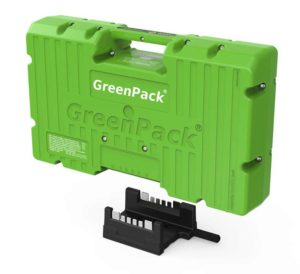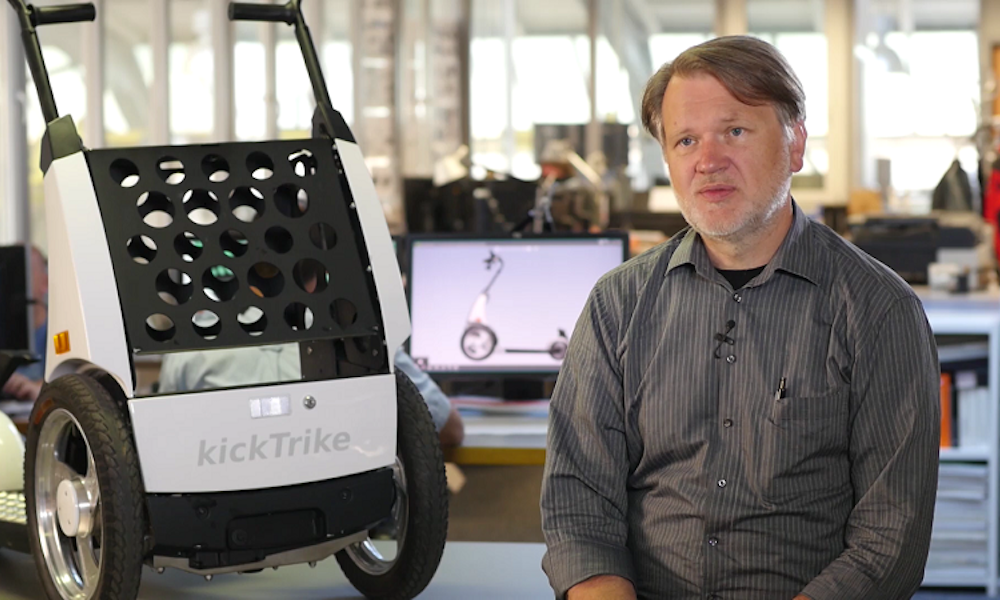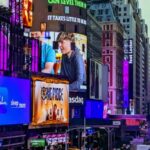Careful, deliberate, thorough – this is not necessarily how one imagines a revolutionary. Hans Constin would probably never call himself one. He sees himself as an inventor and entrepreneur. And yet, an e-mobility revolution could start because of him.
An intelligent, powerful and robust replacement battery with standardized interfaces is how Constin’s company “GreenPack” describes its product. The basic idea are replacement batteries for electric vehicles. This also does not sound really sexy. But the more closely one looks at the business model, the clearer it becomes: this is where a major change for Germany’s e-mobility could begin.
GreenPack doesn’t just sell batteries: GreenPack plans – from product to sales – a complete ecosystem builtaround battery packs. GreenPack also follows the pattern of other disruptive companies.
Step 1: Have a clever idea
Imagine if instead of recharging your battery at a charging station, you could simply exchange it for a full battery. Kind of like a soda vending machine-meets-bottle exchanger. “We want to set up our battery exchange at discount stpres,” Constin explained in conversation with Mobility Mag. “Our vision is food + energy – where I buy my food, I also get the energy for my light vehicle.”
At these stations, customers give their empty batteries and exchange them for full batteries. The recharging also takes place here. Electricity would have to be supplied by electric companies, but solar cells on the rooftops of the stores, such as Aldi Süd, might complement this. This is how Hans Constin imagines it. The sations would thus be charging and changing station in one. Only that customers would not have to wait hours to charge their batteries, but could simply pick up a full battery right away. The machines could hold 24, 64 or even 128 batteries as required, thus covering even large demands.
Step 2: Solve a problem

If users can easily exchange their batteries at discount stores, GreenPack is solving a completely different dilemma: otherwise, would have to set up an infinite number of charging stations across Germany for a changeover to e-mobility. Access would be uncomplicated and comprehensive. It also solves the politically difficult question of having charging stations in large cities.
“Instead of having to reduce the space for cars and trucks even more through more construction, we can link our vending machines to the already existing infrastructure of the discount store and set them up on private grounds,” says Constin.
The first step has already been taken. With a partner company from Dresden, the first battery exchange machine in Germany will be built in three to four weeks. A first place for the machines has not yet been established, but the Lidl flagship store in the inner city of Berlin has announced that it wants to test the concept.
Step 3: Make money where you can
Why not? With the simple installation of the battery dispensers in front of their branches, discount stores can already make money. In the simplest scenario in terms of rent. But this is only the beginning.
The machines are to be equipped with smart-screens which can communicate with the smartphones of customers.
If a customer comes to the exchange station, the machine can see which GreenPack type the customer would want. “These could be courier services, e-taxis or e-bikes, e-scooters and e-light cars or even people who have household appliances with batteries, such as lawnmowers or vacuum cleaners. In the battery machine, there are batteries that are for general use, or also, if a car manufacturer want to reserve a special GreenPack only for its customers, it would also be possible,” explains Constin.
Constin is also thinking about recycling batteries more efficiently. For example, rechargeable batteries with an 80 percent residual capacity, which are often regarded as “exhausted” in vehicles, can be offered in the vending machines. “For example, if you use your electric vehicle every two weeks, you can pay with these batteries and save.”
The really clever part of the concept is, however: the battery packs would not only include GreenPack batteries, but also those from other vendors.
“This can be Audi, but this can also be Lidl or a current supplier such as Natural Current, which offers their batteries for their customers there,” says Hans Constin.
This shows the true genius of the model. GreenPack would create a system in which a large number of industries could co-operate. From the advertising screen on arrival to the selection of the battery type, there are numerous possibilities to monetize these exchange stations.
Step 4: Create an unbeatable offer
For the customer, the exchange of the batteries would be very cheap. The exact price would depend on the customer profile. The monthly price for customers should not be much more than the current price of a fuel tank for a VW Polo Diesel.
In addition, the machines themselves become electricity storage. If no current is needed for charging, there is the possibility to feed the current back into the grid.
Step 5: Create demand
Because e-mobility is still taking its first baby-steps in Germany, especially in the field of electric light vehicles, GreenPack wants to help contribute ideas. “Until now, designs that appeal to users emotionally have been missing,” says Constin. So, on the company’s website cab be found a concept study on an e-car, but also ideas for other devices from trailers to tuk-tuks.
Right at the front, the KickTrike, next to two electric bikes, is an in-house design by Constin. Officially, KickTrike is a company of its own and is intended to give people an additional transport option, especially to be able to transport heavy loads or weekday purchases without cars.
The first idea for the KickTrike came to Constin in 2006. This year, first models are to come to Europe under the name “EGO 1,” which Constin sold to a Chinese company. The vehicles will cost around 3000 euros. Constin hopes to produce the KickTrike in several versions: a bike version with a top speed of 6 kilometers per hour, a faster moped version and perhaps an ultralight version for children.
Constin does not want to build his own cars or other vehicles. Here, his view is similar to his vision for the battery exchange stations. He would rather be a source of ideas to drive his own business model.
GreenPack: A revolutionary “in the making”?
“The GreenPack Battery System is a new infrastructure for storing green electricity and supplying power to light electric vehicles,” says Constin. “If in 20 years every discount store has an automatic battery, you can drive across Germany with a light vehicle which has 150 km range, without taking long recharge breaks And the infrastructure does not cost the taxpayer anything. On the contrary, the operator can earn even more money because he can also sell the electricity he produces on his roof. ”
Thus, a business ecosystem could be created around the batteries of Hans Constin and GreenPack – step by step. Similar to Elon Musk, it has a combination of electric cars, batteries and solar roofs. Similar to Apple, which has built its own universe around its devices. And similar to Google, where people are just beginning to wonder how they can escape the Google empire.
It is perhaps a little presumptuous (and premature) to put Hans Constin in the ranks of these companies. Especially as the automatic system concentrates on e-light vehicles. But it is also clear that only entrepreneurs like him, who think in holistic systems and not in individual products, have a revolutionary potential. However, it remains to be seen whether and how the visions of Hans Constin and his companies will change electromobility in Germany.
Where others have failed so far …
Much of this will actually depend on the infrastructure and how attractive and above all, user-friendly GreenPack’s changing of the batteries will be. Previously, comparable concepts for change-over (though for more heavy-duty electric vehicles) failed to satisfy users and companies: it was judged to be too cumbersome and financially unattractive.
The US company Better Place has already tried the idea of a quick battery change in the Netherlands several years ago. However, the company quickly went broke for lack of investors.
And no one less than the illustrious Elon Musk also offers an exchange for his Tesla models, if only at a station between San Francisco and Los Angeles. However, after initial tests in which the station was hardly used, his conclusion was that the model has no future. There’s simply a lack of interest.










